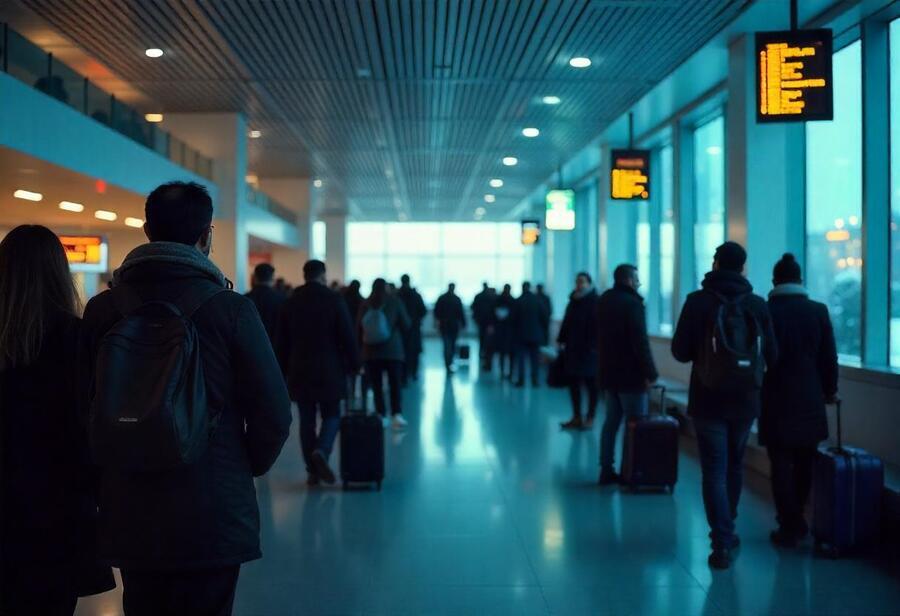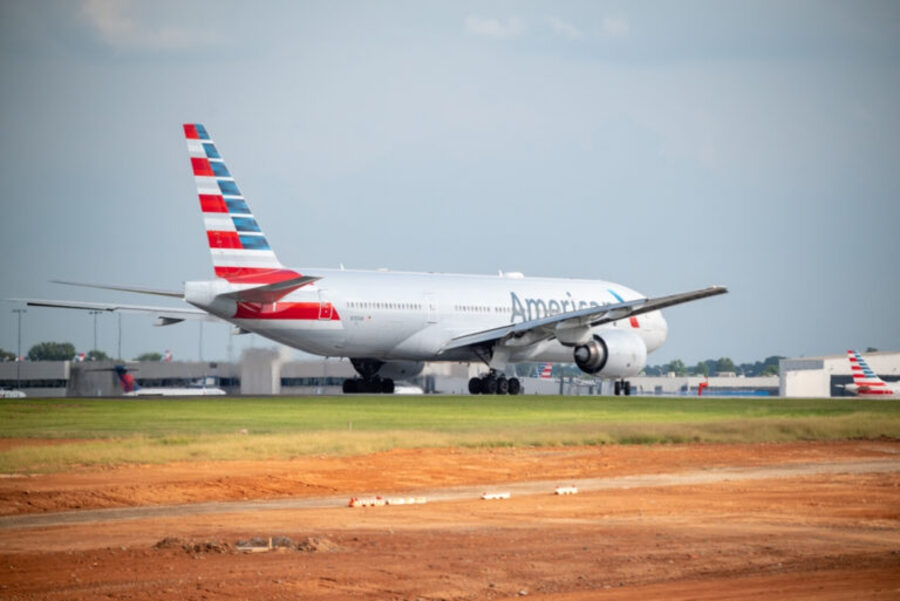American Airlines Flight AA333 from Athens to John F. Kennedy International Airport Forced to Divert to London Heathrow, Mid Route in Alarming Transatlantic Disruption, The Truth That's Sending Shockwaves - Travel And Tour World
Sunday, May 18, 2025

American Airlines Flight AA333 was cruising smoothly across the Atlantic when everything changed. The flight, bound for John F. Kennedy International Airport, was suddenly forced to divert mid-route. Instead of landing in New York, Flight AA333 veered off course and touched down at London Heathrow. This alarming transatlantic disruption is now making global headlines—and for good reason.
What began as a routine journey from Athens ended in a dramatic shift no one onboard expected. American Airlines, known for managing high-traffic international routes, found itself in crisis. Meanwhile, passengers heading for John F. Kennedy International Airport were left confused, anxious, and stranded at London Heathrow. The truth behind this diversion is sending shockwaves through the travel industry.
This is not just another flight delay. This is a wake-up call. A transatlantic airline travel disruption of this scale points to deeper issues in aviation logistics, safety, and communication. Why did American Airlines Flight AA333 divert? What happened mid-route that forced this unexpected landing? And how are passengers and the industry reacting?
As the details unfold, one thing is certain—this isn’t just about a single flight. The impact ripples through schedules, airports, and trust in air travel itself. John F. Kennedy International Airport never received the plane. London Heathrow took in a flight it wasn’t prepared for. And American Airlines is now under the microscope.
Stay with us as we unravel the full story of Flight AA333—the transatlantic disruption no one saw coming, and the truth too big to ignore.
Passengers aboard American Airlines Flight AA333 were three hours into what should have been a routine transatlantic journey from Athens to New York JFK. Then, in a sudden shift, the Boeing 777-200ER began descending—toward London, not New York. The unexpected diversion has triggered alarm among travelers, airlines, and aviation insiders alike.
The aircraft, registered as N767AJ, had taken off from Athens Eleftherios Venizelos International Airport at 16:18 EEST, heading for one of the busiest airports in the United States. But somewhere over the North Atlantic, the flight plan abruptly changed.
London Heathrow became the emergency landing site.
This was no minor detour. Flight AA333 diverted nearly 1,100 kilometers off course, breaking passenger expectations and airline protocol in a high-stakes decision. The disruption has sparked widespread concern, especially in light of recent pressure on airlines to prioritize safety while balancing high demand for international travel.
The reason behind the diversion has yet to be officially disclosed. However, in-flight diversions on long-haul routes like this are rarely done without serious operational or safety concerns. With no reported weather interference, industry analysts are speculating possible mechanical issues, cabin emergencies, or crew health-related complications.
Travelers now find themselves unexpectedly grounded in a country not on their itinerary.
American Airlines now faces intense scrutiny—not only for the diversion itself but also for how it handles stranded passengers and disrupted schedules. In an era where flight delays and cancellations are soaring, unplanned diversions like AA333 risk eroding public trust.
Moreover, transatlantic travelers often build tightly choreographed travel plans, including onward connections, hotel reservations, and work obligations. A diversion from JFK to London doesn’t just delay an arrival—it unravels an entire journey.
These disruptions are more than inconveniences—they’re costly, emotionally draining, and highlight the fragility of global travel systems under pressure.
The consequences of AA333’s diversion stretch far beyond Heathrow’s tarmac. Flights inbound to New York are typically part of broader scheduling webs. One unplanned landing forces crew reshuffling, delays for returning aircraft, and reallocation of gates and ground personnel.
Meanwhile, Heathrow’s already overburdened capacity faces additional strain. Slot management becomes even tighter. Nearby hotels face last-minute booking spikes. And passengers, still in transit, are left navigating unfamiliar terminals, foreign entry procedures, and sudden changes in travel policy.
This single event sends shockwaves through both U.S. and European aviation ecosystems.
As international travel rebounds post-pandemic, airlines are under immense pressure to maintain schedules while juggling staffing shortages, equipment maintenance, and congested airspaces. American Airlines is no exception. But incidents like this one with Flight AA333 underscore a pressing reality: the aviation sector is operating at its limits.
Travelers crossing the Atlantic are advised to remain flexible, insure their trips, and closely monitor flight updates—even on seemingly routine routes.
Moreover, tourism boards and hotel partners in gateway cities like New York and London must now factor in the growing frequency of travel disruptions. From a hospitality standpoint, last-minute changes are becoming the norm, not the exception.
While the FAA and European aviation regulators have improved safety protocols, operational reliability is now the travel industry’s greatest test. Airlines must not only fly safely—but recover smoothly when plans fall apart.
AA333’s diversion has exposed gaps in traveler support during mid-route emergencies. Passengers on international flights should not be left guessing about next steps or stranded in unfamiliar countries without timely assistance. More robust communication, pre-arranged contingency plans, and airline-hotel coordination are desperately needed.
The real issue isn’t the diversion itself—it’s what happens next. And for many passengers today, the answers are still painfully unclear.
Flight diversions don’t just disrupt plans. They stir anxiety. Passengers, midair, are left with little information. A shift in altitude. A turn off course. A cryptic announcement. Then, hours later, they land in a country they weren’t expecting, with no clarity about connecting flights or hotel arrangements.
Families are split, meetings are missed, and business opportunities vanish. That emotional burden can’t be measured in statistics. It’s personal, and it’s growing more common in today’s unstable aviation climate.
For the 200+ passengers aboard AA333, this wasn’t just a diversion. It was a breaking point. A reminder that in modern travel, certainty is no longer guaranteed.
Flight AA333’s diversion to London Heathrow from Athens en route to New York JFK is more than a footnote in today’s aviation log. It’s a symbol of a system on edge. Airlines must now answer the tough questions: Are they ready for emergencies? Are they protecting their passengers? Are they investing in reliability—not just profit?
This unexpected detour must spark more than temporary inconvenience. It must lead to lasting change.
Until then, travelers must remain vigilant, adaptable, and emotionally prepared—for anything.











